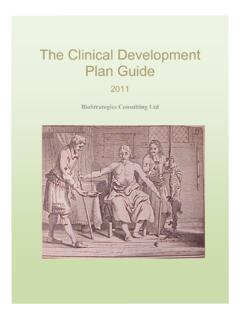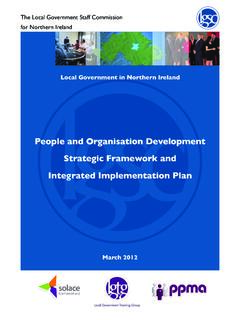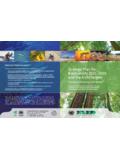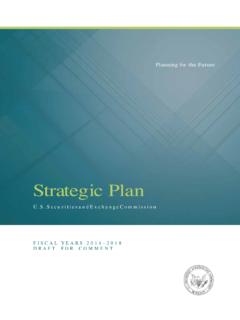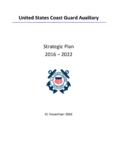Transcription of SMALL TOWN ECONOMIC DEVELOPMENT - A STRATEGIC …
1 SMALL town ECONOMIC DEVELOPMENT - A STRATEGIC plan FOR BAYFIELD, COLORADO by Jack McGroder A project submitted in partial fulfillment of the requirements for the Degree of Master of Arts in Political Science with an emphasis in politics and public policy The University of Colorado, Denver November 2009 Abstract Many smaller, rural communities across the United States face the challenge of weak or diminishing ECONOMIC vitality and a loss of population. For some communities, these outcomes are probably inevitable, and not amendable to positive interdiction. But many other communities can determine their inherent strengths and commit to building upon those strengths, and identify their specific challenges and craft strategies for addressing those, as well. Bayfield, Colorado, is very fortunate in being located in a region of the inter-mountain west with a mild climate, great natural beauty, and a high quality of life.
2 These "natural amenities" have and will continue to drive population growth centered on middle- and upper-middle class individuals, families, and entrepreneurs. By focusing on the basics of high-quality public infrastructure, closing identified market information gaps, working to build stronger, more efficient business networks across the region, and branding itself as having these life-quality and business-enabling traits, Bayfield can continue to grow and prosper in the future. 1 CONTENTS Abstract ..1 CHAPTER I ..3 Problem Caveat ..4 CHAPTER II Literature 1. Process and Organization ..6 2. Assessing the Local Context ..8 3. ECONOMIC Fundamentals Information, Incentives, and Markets..10 4. Theories of ECONOMIC DEVELOPMENT ..19 5. Examples of Existing ECONOMIC DEVELOPMENT STRATEGIC Plans ..26 CHAPTER III CHAPTER IV Conclusions.
3 33 Appendix A Comprehensive ECONOMIC DEVELOPMENT Packet - April Bayfield 2005 Comprehensive plan : Status Review February Local ECONOMIC DEVELOPMENT Recreation, Tourism, and Rural Well-Being ..65 Appendix B town of Bayfield ECONOMIC DEVELOPMENT STRATEGIC Appendix C Progress Report October Appendix D Additional Theories of ECONOMIC Appendix E Value-added Agricultural Processing: Naturally Raised Beef ..89 Bibliography ..90 2 CHAPTER I Problem Statement The general problem this project has sought to address is how to effectively promote ECONOMIC DEVELOPMENT (ED) in SMALL town specific problem: How to effectively promote ECONOMIC DEVELOPMENT in the SMALL rural town of Bayfield, Colorado? The specific current deficiencies the town of Bayfield faces are significant sales tax leakage due to our proximity to Durango, Colorado (18 miles), to where nearly half of the adult population commutes to work, and secondly, to an overall narrow and historically static ECONOMIC base.
4 On a more hopeful note, this latter factor may be at or approaching a positive tipping point as the greater Durango market has grown and related housing prices have escalated tremendously over the recent decade, making Bayfield all the more attractive, if still a bedroom community to its larger neighbor. This sales tax leakage and the narrow ECONOMIC base have impaired the town 's ability to 1) fully secure current and future funding for critical infrastructure maintenance, enhancement, and growth; and 2) provide for the enhanced public services and amenities including public safety, parks and recreational amenities, and community DEVELOPMENT investments that are both expected by current residents (Bayfield, 2005) and that are also known to attract additional residential growth (Blair & Premus, 1993). These local market traits have contributed to perpetuating a stunted local business performance relative to what one might otherwise expect of a community of Bayfield's size (THK, 2005), and can contribute to perpetuating reduced expectations in the future (Howland, 2003).
5 3 The goals of this project have been to more clearly define the specific factors contributing to these current local outcomes, to provide insight to the fundamental operations of a seemingly impersonal and complex market-based system, and to identify specific, actionable goals and strategies, including accepted best-practices, for the autonomous, local targeting of these and future challenges. Caveat It must be stated at the outset that the "final product" of this master's project, the ECONOMIC DEVELOPMENT STRATEGIC plan for Bayfield, Colorado, located in Appendix B, as well as the initial research and community meetings that went into producing that plan , were all completed prior to the decision to use that product as the basis of this expanded master's project. While the local needs and goals identified in that earlier process would not have changed significantly had a more standard chronology been followed, some elements of the outreach and engagement process may have benefited from a more determined focus.
6 Additionally, regarding the whole of research performed, the engagement process that was pursued, the goals ultimately identified, even the theories of ECONOMIC DEVELOPMENT brought subsequently into this paper, all seek one overarching principle: SMALL "p" pragmatism. Does it fit and is it appropriate to Bayfield's particular circumstance? Will it work here? Can we pull it off with the human and financial resources available? These were and remain the real-world driving criteria for both ends of this project. Formal theories were not brought explicitly into the process in its earlier stages; their later introduction in this paper may nonetheless allow for a more informed understanding or proficient execution of the adopted plan , and may point to areas of further study for those so interested. 4 CHAPTER II Literature Review Much of the ECONOMIC DEVELOPMENT literature, likely the majority, would appear to be focused upon 1) larger metropolitan DEVELOPMENT and/or the redevelopment of blighted urban and industrial regions (Brookings Institution, 2002; Leinberger, 2005), or 2) the political economy of state DEVELOPMENT in the developing world (Kosack & Tobin, 2006; Horowitz, 2004).
7 While this extensive body of literature often omits addressing directly smaller communities and the rural ECONOMIC landscape, the most important findings coming through this literature often can be translated productively to inform the practice as it must be applied in the smaller communities at the center of this paper. One of the most important of general insights in this regard is that of local information gaps and the various response strategies available, not just in large metropolitan areas, but in SMALL towns and rural communities too (Sabety, J. & Carlson 2004; Sabety, P. 2006). As these and other findings from the urban and regional DEVELOPMENT literature can be adapted in this light, this author will attempt to do so. The balance of this literature review is organized around five broad areas of content. These are 1) Process and organization as they apply to local ECONOMIC DEVELOPMENT ; 2) Assessing the local context, whereby one establishes the contingent baseline of local assets and deficiencies, a baseline we seek to improve upon; 3) ECONOMIC fundamentals, being essential market factors, the various incentives so established, and the practical leverage available; 4) Theories of ECONOMIC DEVELOPMENT , a non-exhaustive inventory of some of the more pertinent insights to effective practice, particularly as they might be applied in a SMALL town context; and 5) a few brief examples 5 of extant ECONOMIC DEVELOPMENT STRATEGIC plans.
8 A possible sixth area of focus could be that of drawing out implementation and follow-through more explicitly from process and organization; for the purposes of this project I have left the former considerations, in muted form, under that of process and organization. More on this in the conclusion. 1. Process and Organization After initial research has been completed, and with a reasonable roadmap outlined for that still to be performed, the first formal step in the ECONOMIC DEVELOPMENT (ED) progression is to define the actual public process and outreach strategies to be followed and the organizational components to be created (Shively, 2000; University of Illinois, retrieved 2008; Municipal Research and Services Center of Washington, retrieved 2008; Shields & Farrigan, 2001). The literature examined appears fairly consistent in this regard, and particularly so in regard to SMALL town communities.
9 Implementation and follow-through will also require the full and active participation of these same human assets. If not all key constituents and business interests are included preferably from the outset the process can 1) lack the critical contributions of those absent parties, and 2) eventually become subject to being questioned, delegitimized, or countered by those parties (Bleiker & Bleiker, 2000). After bringing together both the critical stakeholders and as fully representative a cross-section of the community as possible, this working group must then assess and define the local ECONOMIC context by way of a broad-ranging inventory of local assets and deficiencies (Shields & Farrigan, 2001; University of Illinois, ). This would include defining the community setting, current ECONOMIC trends, and an inventory of natural, financial, and human resources.
10 One must also determine vital or emerging industry 6 sectors; those in likely decline; which are core base-industries that bring critical outside revenue into the area, and which merely circulate dollars already in the local economy (Shields & Farrigan, 2001). With these local inventories in hand, the working group can begin to evaluate this fairly unique set of assets and liabilities and begin the consideration of a path forward. But in order to move forward, the group must also have a clear sense of core community values and fundamental, long-term goals. This can only be constructed upon an up-to-date community vision that clearly articulates those concerns. Such visions can often be found in formal community comprehensive plans and these plans can then be critical resources for informing both the early stages of the ECONOMIC DEVELOPMENT process and for later evaluating outcomes against those original visions.

